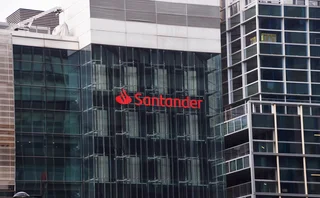
RJ O’Brien’s chief risk officer on margin models and clearing
CME’s looming switch to a VAR model will have a pronounced effect on broker and its clients, says Brad Giemza

Clearing has been in the news for all the wrong reasons recently. Nasdaq Commodities’ king-sized default last September has sparked debate over the risk of allowing independent traders to hold large positions as direct clearing members. Margin models are under scrutiny, and some insiders are even questioning whether certain products are suitable for clearing.
Brad Giemza, the chief risk officer of RJ O’Brien, a futures broker with 60 dedicated risk managers that clears on behalf of 80,000 clients, is aware of the damage that a single counterparty can wreak to the system. He quotes a maxim that the company is fond of: “One client will not make us wealthy on our balance sheet, but one client can absolutely put us under.”
The broker is modest in terms of overall headcount – around 600 staff – but it ranks as the eleventh largest US regulated clearer measured by segregated customer assets, below large investment banks such as Goldman Sachs, JP Morgan and Morgan Stanley. Through its risk managers, the firm keeps in close contact with clients regarding concentrated positions that breach certain thresholds, Giemza says. Sometimes, the firm will decide that a position makes sense, and hold off pulling the client to one side and quizzing them on a trade.
Other times, when risk managers do not understand the logic of the concentrated positions, “we will talk to our clients about where we need to scale up in margin, and ask them to have more money on hand with us for holding certain types of positions”, Giemza says.
The implication of this approach is that defaults at clearing houses such as Nasdaq are not necessarily down to structural weaknesses in the clearing architecture, or flawed margin methodology, but just plain old client management failures.
Another example of a market blow-up that an “independent set of eyes”, in Giemza’s words, could help mitigate is the February 2018 losses on short-volatility products. A spike in the Vix volatility index following a fall in US stock prices torpedoed exchange-traded products, hurting investors and dealers. Such short positions would be under scrutiny at RJ O’Brien, Giemza says.
It’s easy to be wise after the event. One of the main roles for risk managers is to help insulate companies from future losses, and for a broker, having an effective margin model is a crucial part of this.
CME Group, one of the broker’s most important exchange partners, is ditching its ageing model for margin calculation, known as Span, and shifting to a historical value-at-risk (HVAR) methodology. The move will pose challenges for clearing members such as RJ O’Brien, as well as their clients.
“With Span, a contract value might not change in a week if there is low volatility or trading on a contract,” Giemza says. “You will know the margin you need to post and that will not be updated in a week. But with HVAR now, every day you will have a variable come back at you with the most recent calculation.”
The change has precipitated a wide-ranging overhaul of RJ O’Brien’s risk management setup. The firm intends to update its risk systems, to ensure its margining engine synchs up with the new CME methodology. Managers will need to test the models and watch outputs to make sure they’re accurate.
Technology is something you always have to be improving. If you already have a big spend that’s coming up due to industry or regulatory changes, you should see what you can do to get added value
Brad Giemza
“Now that we are moving to HVAR with CME, it’s a good opportunity to update how we look at market and counterparty risk intraday,” Giemza says.
The overhaul will also enable the firm to revisit related areas, such as its stress-testing processes.
“Technology is something you always have to be improving,” Giemza says. “If you already have a big spend that’s coming up due to industry or regulatory changes, you should see what you can do to get added value.”
When it comes to tech, Giemza is on familiar ground, having spent most of his career in IT roles. He joined RJ O’Brien in October 2017 from MUFG Union Bank in southern California, where he worked for three years as head of IT for investment banking and capital markets. Before that, he was head of risk IT at brokerage Newedge Group. Between his roles at Newedge and MUFG, Giemza worked as a contractor for RJ O’Brien, helping to prepare a technology integration plan for the firm’s acquisition of Kyte Group, a European clearing broker that was owned by intermediary GFI Group.
A background in technology will certainly not hinder Giemza as operational risk becomes increasingly important for the risk team at RJ O’Brien. Some of the major focuses at the brokerage include cyber risk and IT disruption. The latter is crucial in the context of straight-though processing, which allows for trading and clearing flows to happen quickly and efficiently.
“Commodities futures risk has always been and will always be focused on daily liquidity,” he says.
An emphasis on liquidity means that any blips in electronic trading and clearing, known as exceptions, need to be handled quickly. “We’re very reliant on good technology and operations,” he adds.
On a human level, the company plans to decentralise its risk management staff from Chicago and employ a “follow the sun” model. Right now, the firm’s market risk managers work out of Chicago 24 hours a day, six days a week, across three eight-hour shifts a day. After the changes have been instituted, risk managers across hubs in the Americas, Emea (Europe, Middle East, and Africa) and Asia-Pacific will work in their own time zones, enabling managers to improve regional market expertise, Giemza hopes.
Having relocated from southern California to Chicago to take up his role in the independent family-owned brokerage, Giemza may not have succeeded in following the sun. But he and his team are working to ensure excessive risk doesn’t cloud the outlook for RJ O’Brien.
Biography – Brad Giemza
2017–present: Chief risk officer, RJ O’Brien & Associates
2014–2017: Head of investment banking and capital markets IT, MUFG Union Bank
2007–2014: (latterly) Global head of risk IT, Societe Generale/Newedge Group
1997–2007: (latterly) Technology program manager, JP Morgan Chase
Editing by Alex Krohn
Only users who have a paid subscription or are part of a corporate subscription are able to print or copy content.
To access these options, along with all other subscription benefits, please contact info@risk.net or view our subscription options here: http://subscriptions.risk.net/subscribe
You are currently unable to print this content. Please contact info@risk.net to find out more.
You are currently unable to copy this content. Please contact info@risk.net to find out more.
Copyright Infopro Digital Limited. All rights reserved.
As outlined in our terms and conditions, https://www.infopro-digital.com/terms-and-conditions/subscriptions/ (point 2.4), printing is limited to a single copy.
If you would like to purchase additional rights please email info@risk.net
Copyright Infopro Digital Limited. All rights reserved.
You may share this content using our article tools. As outlined in our terms and conditions, https://www.infopro-digital.com/terms-and-conditions/subscriptions/ (clause 2.4), an Authorised User may only make one copy of the materials for their own personal use. You must also comply with the restrictions in clause 2.5.
If you would like to purchase additional rights please email info@risk.net
More on Risk management
Regionals built first-line defences pre-CrowdStrike
In-business risk teams vary in size and reporting lines, but outage fears are a constant
Op risk data: Santander in car crash of motor-finance fail
Also: Macquarie fined for fake metals trade flaws, Metro makes AML misses, and Invesco red-faced over greenwashing. Data by ORX News
Public enemy number one: the threat to information security
Nearly half of domestic and regional banks report risk appetite breaches amid heightened sense of insecurity
Credit risk transfer, with a derivatives twist
Dealers angle to revive market that enables them to offload counterparty exposures, freeing up capital
Op Risk Benchmarking 2024: the banks
As threats grow and regulators bore down, focus shifts to the first line
Fed stress-testing operational readiness of discount window
Experts say consultation on improved ops should be accompanied by focus on willingness to borrow
Millennium risk manager defends leverage in basis trade
“Gross notional measures don’t equate to market risk,” says Scott Rofey
Banks feel regulatory heat on op resilience
Op Risk Benchmarking: supervisors dial up reporting expectations and on-site inspections







